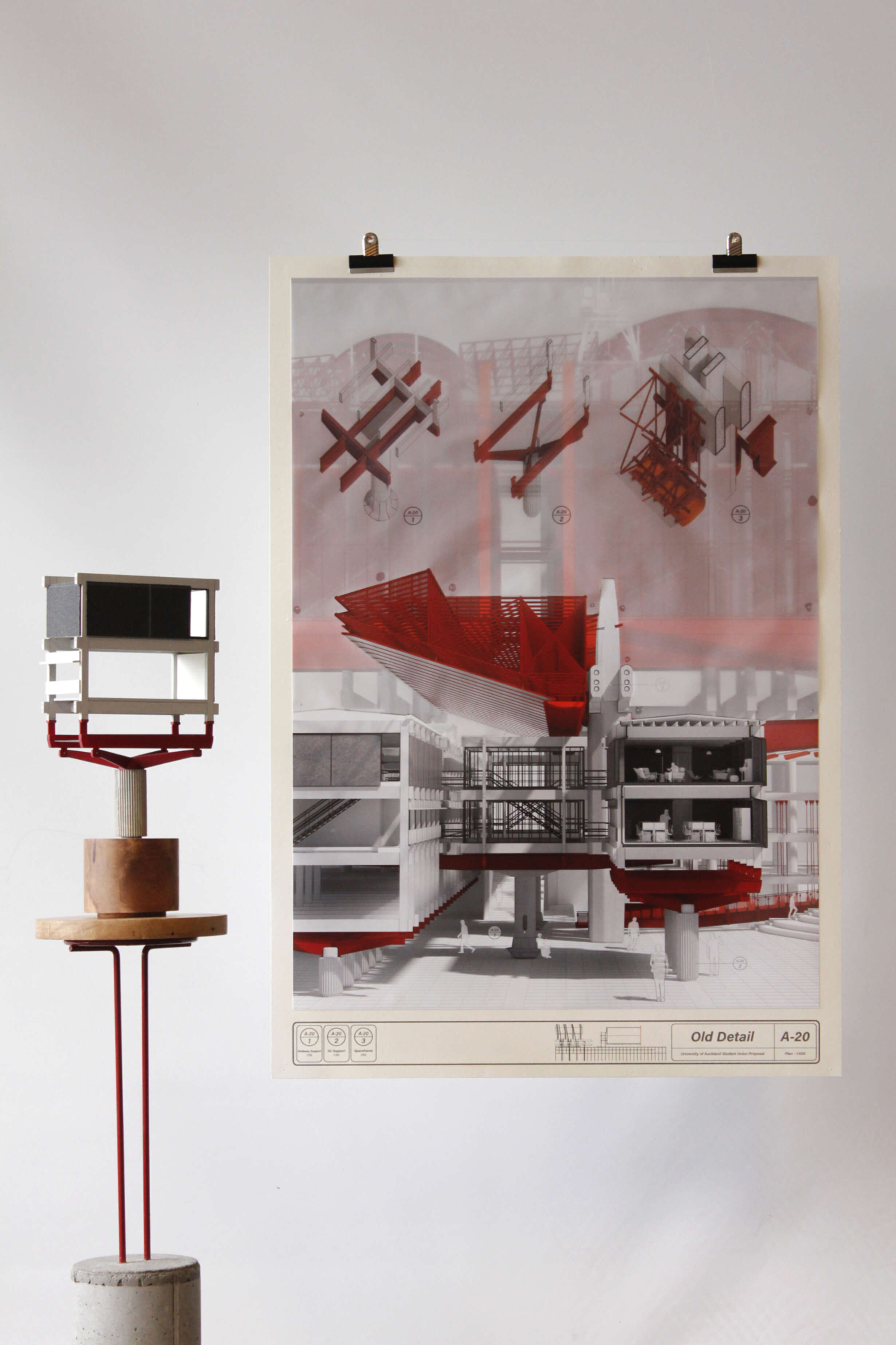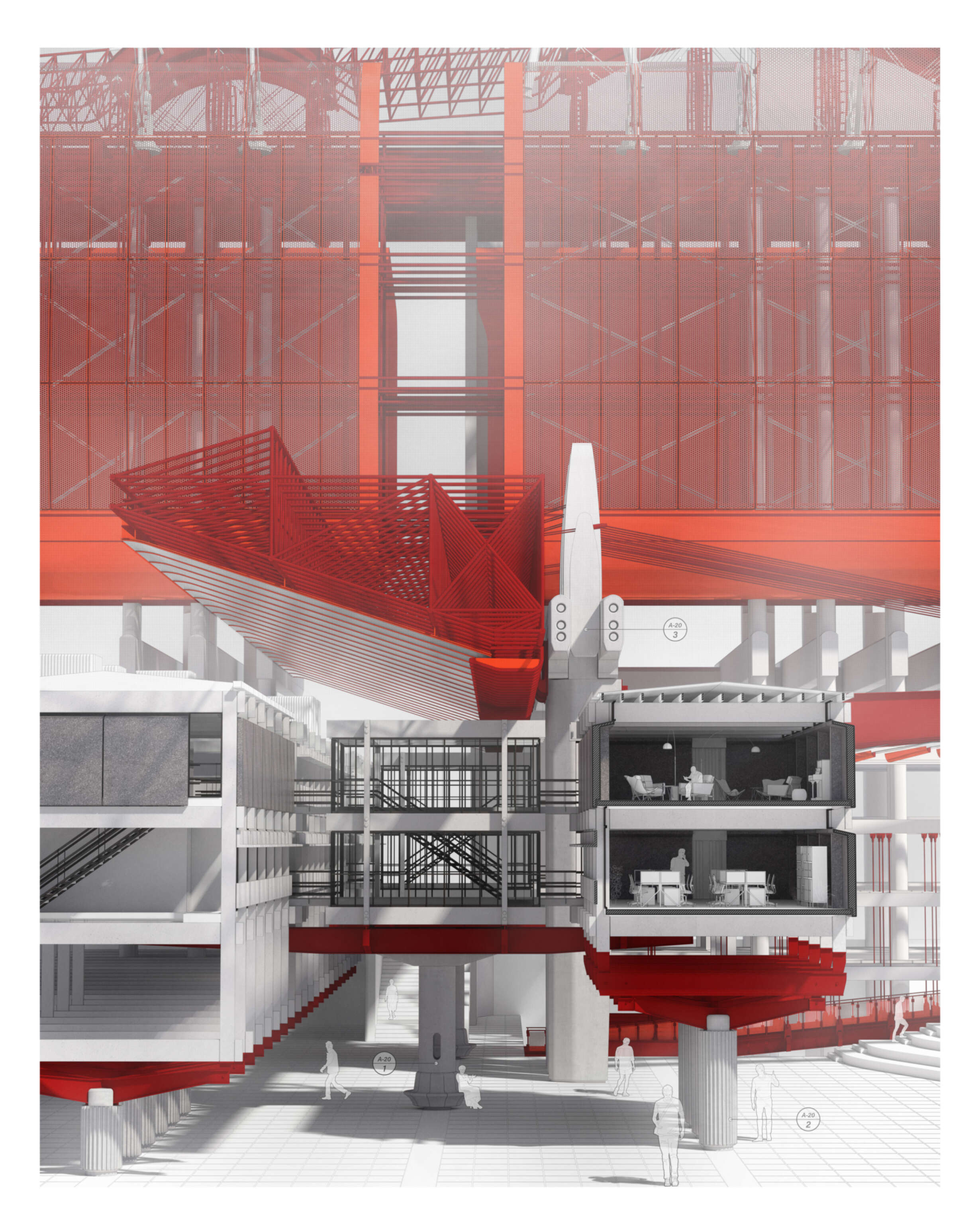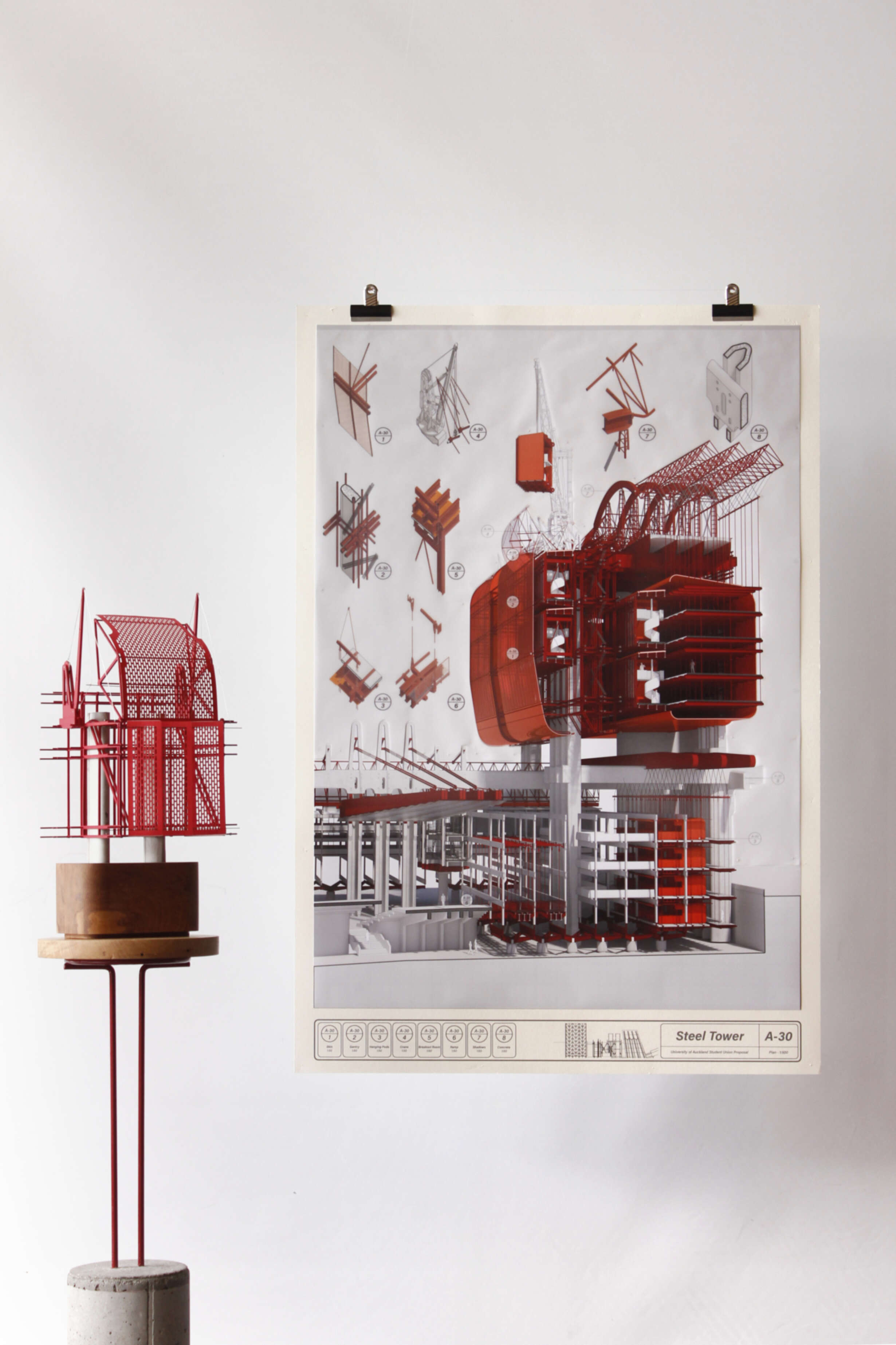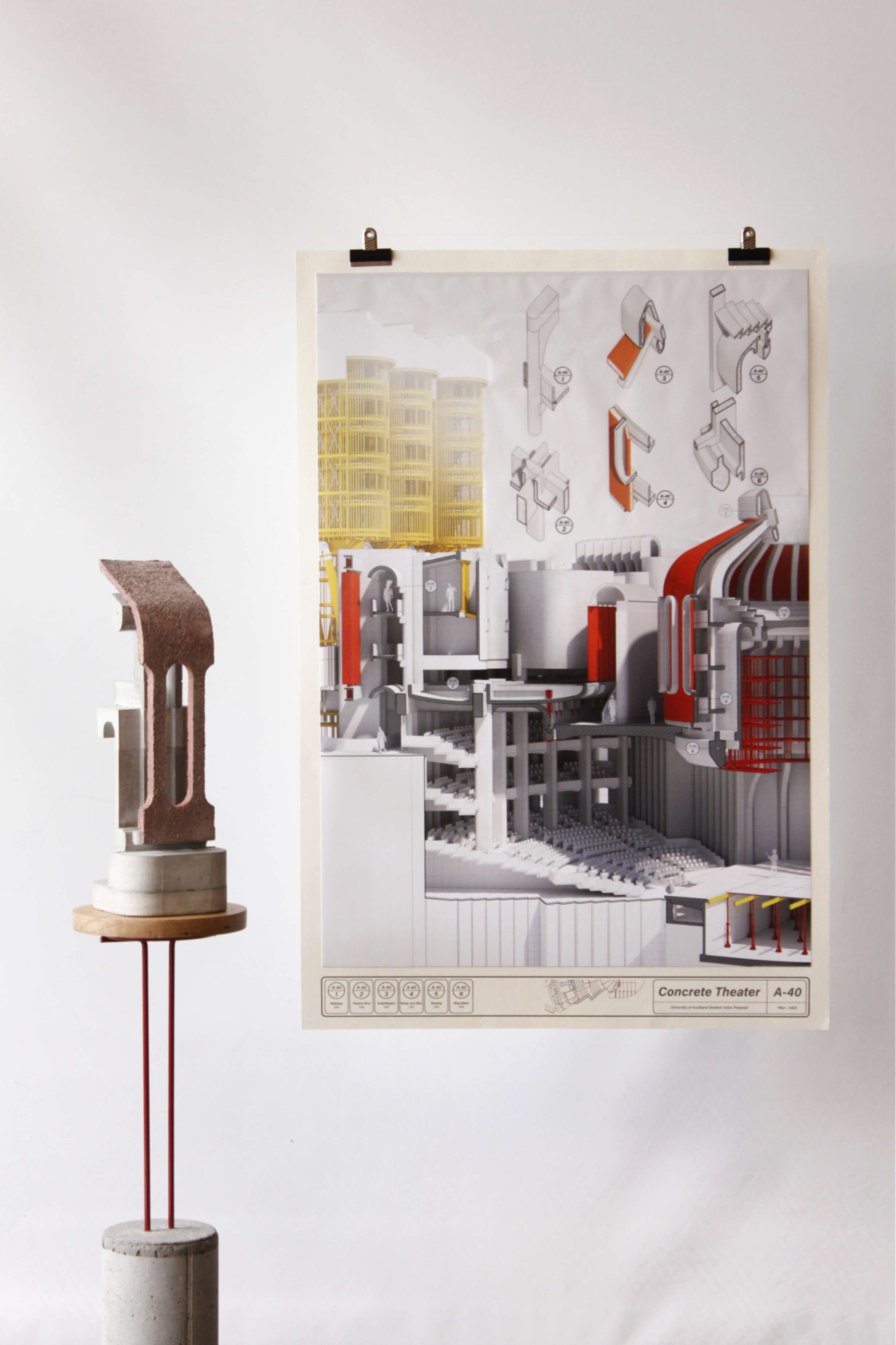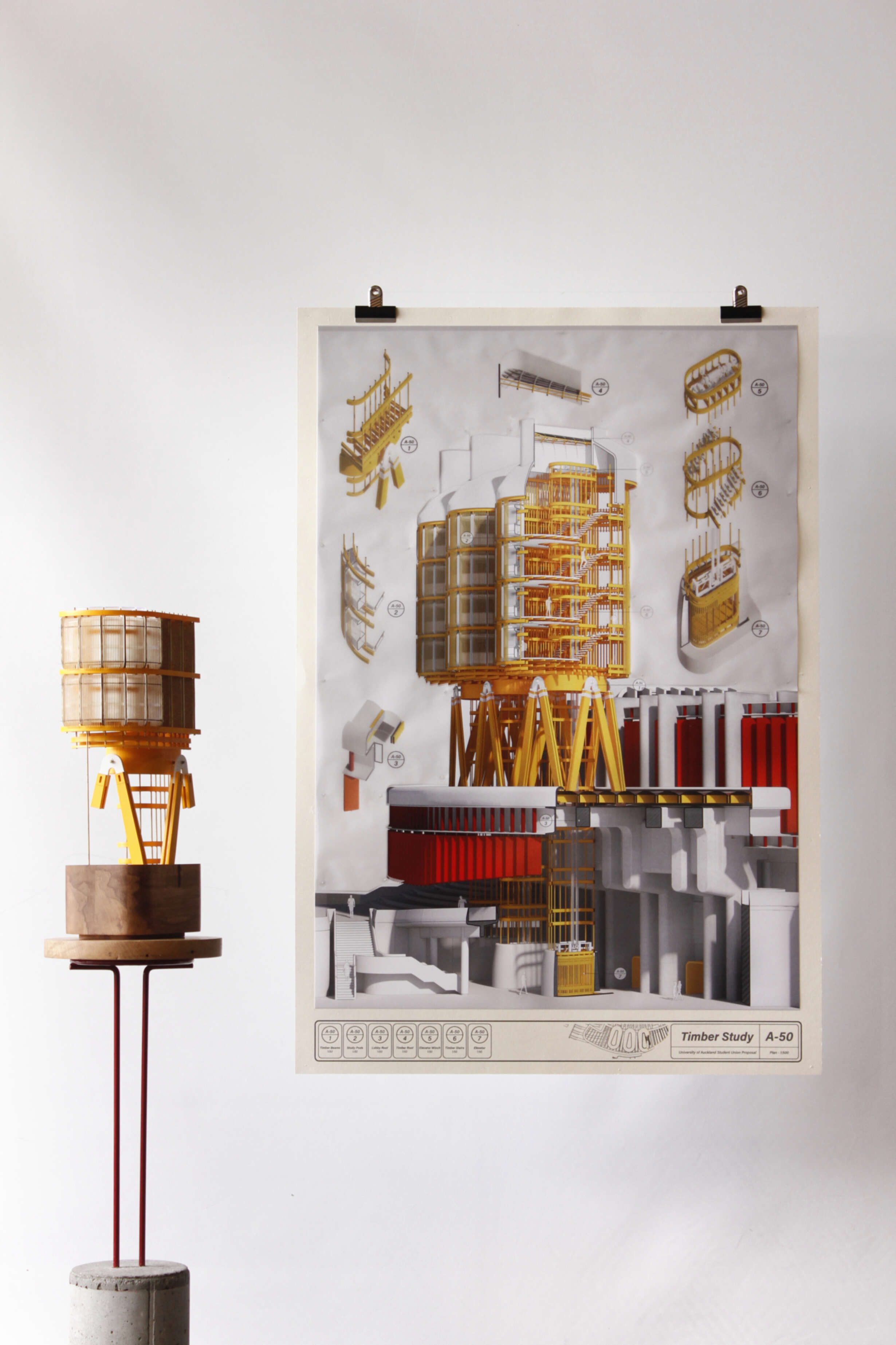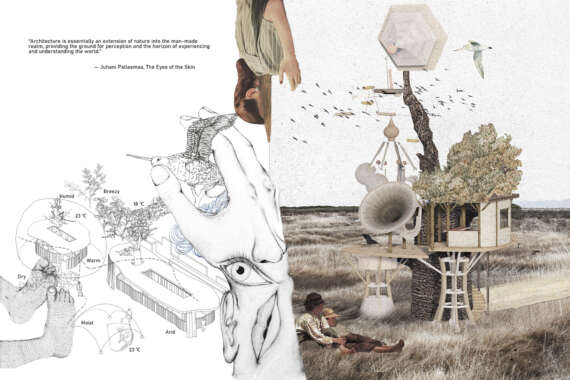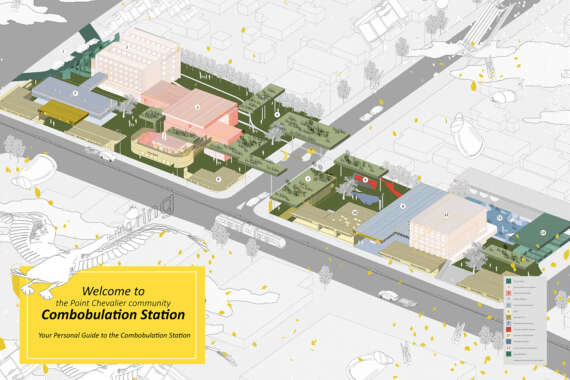My research vehicle takes the form of a tectonic re-encoding of the Brutalist Student Union typology at the University of Auckland. A series of interventions in and around the Student Union building seeks to develop a new space for students while also rediscovering and reinfusing the theoretical underpinnings of a Brutalist Student Union typology back into the campus. My reasons for doing so are simple – in a time of increasing isolation and disenchantment among students, there is a need for a sense of place and union among both students and staff at this University.
Steel, concrete, timber - this is how the Student Union objectively exits. To reflect, to challenge, to find one’s place and offer respite – this is subjectively how the Student Union is experienced. In this context, the detail is a language through which these subjective meanings manifest themselves in the built environment.
My project is a series of interventions in and around the Student Union building that, in developing a new space for students, simultaneously looks to rediscover and reimbue the theoretical underpinnings of a Brutalist Student Union Typology back into the University Campus. My reasons for doing so are simple – In a time of increasing isolation and disenchantment among students, there is a need for a sense of place and union students at the University.
Conceived of as the heart of the student body and University, we can draw an anthropomorphic metaphor, where the complex itself is a manifestation of the whole student body as an individual. The various programmes and contexts of the complex are broken down into individual tectonics, each with the responsibility of reflecting a certain attribute of the student body. The tectonics begin with the old detail, then move into the steel tower, the concrete theatre and the timber study.
The old detail construes reflection through the employment of the existing steel and concrete combination to strip the Student Union of its context and ability to hold itself. Through the process of suspension, it becomes a nucleus floating in space which, through reflection, the rest of the Student Union can germinate. This tectonic translates 1968 tectonic energy to 2020 tectonic energy.








